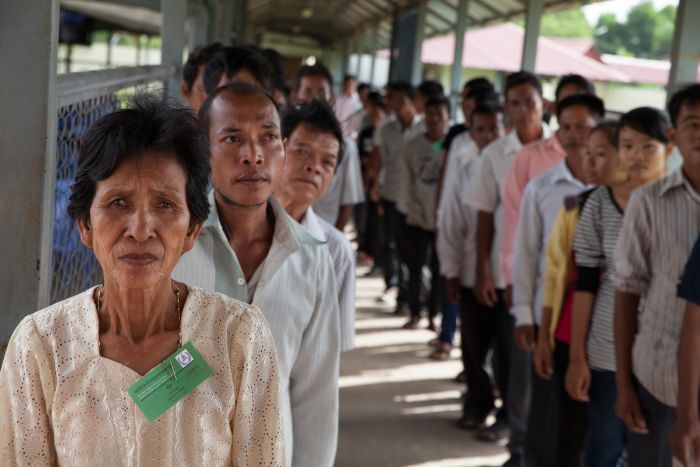How Accurate Was the Information Received from Turatsinze?
One of the structural weaknesses of UNAMIR was the lack of a professional intelligence evaluation unit. The officers who made contact with Turatsinze were known as “military information officers” rather than “intelligence officers.” Their mission under Chapter VI of the UN charter was to “monitor” compliance of the different parties with the Arusha Accords, rather than to proactively “enforce” the agreement.
Lacking the resources to fully evaluate Turatsinze’s credibility, UNAMIR forwarded his reports to the Belgian military intelligence service, the Service général du renseignement et de la sécurité (SGR), four thousand miles away in Brussels. (The former colonial power in Rwanda, Belgium provided the military backbone of UNAMIR and was responsible for security in Kigali.) Appearing before a Belgian senate inquiry in 1997, the Belgian intelligence analyst for Rwanda expressed skepticism about Turatsinze. “He was a deserter,” Major Hock testified. “A priori, therefore, he was not reliable. Don’t forget this might be disinformation. There are regularly people who present their services for financial gain or in the hope of becoming a political refugee.”
A February 2, 1994, report on the Interahamwe prepared by Hock dismissed the information about “weapons caches and distribution” as neither “very reliable” nor “particularly useable.” Hock added that UNAMIR was handicapped by the fact that it was compelled to collaborate with the Rwandan gendarmerie (“a section of which very often has links with criminals”) and had difficulty penetrating “a population that is already secretive and easily hypocritical by nature.”
Read the full report. (In its 1997 report, the Belgian senate criticized Hock and the SGR for paying insufficient attention to the information provided by Turatsinze and declining his requests for protection.)
In a January 12, 1994, dispatch, the French embassy in Kigali described the information provided by Turatsinze as “serious” and “plausible,” noting it coincided with a sudden spike in political violence in the capital. At the same time, the embassy drew attention to the involvement of prime minister–designate Twagiramungu, an outspoken opponent of President Habyarimana, cautioning that “one cannot exclude a disinformation maneuver designed to discredit the president.”
Twagiramungu’s own views about the reliability of Turatsinze underwent a 180-degree shift between 1994 and 1997. Initially, he expressed “total, repeat total, confidence in the veracity and true ambitions” of Turatsinze, according to a January 11, 1994, UNAMIR report. “He is 100% sure that the individual wants out of all these killings and disruption.” Three years later, Twagiramungu dismissed Turatsinze as a “little bandit,” telling the Belgian senate that “these kind of people seek to acquire advantages by selling information or lying.”
These conflicting assessments probably tell us more about Twagiramungu’s changing political fortunes than they do about Turatsinze. In 1994, Twagiramungu had a political interest in discrediting the ruling MRND party. Considered an ally by the RPF, he was appointed prime minister of Rwanda following the genocide. By 1997, however, he had become a political enemy of the RPF and was living in exile in Belgium.
A less partisan analysis of Turatsinze’s information is provided by the Rwanda war crimes tribunal. The ICTR has found that the Rwandan army channeled weapons to the Interahamwe from late 1993 onward and provided military training to Interahamwe members. On the other hand, the judges were unconvinced that the purpose of the military training and weapons distribution was the “extermination” of Tutsis, as claimed by Turatsinze, rather than preparation for renewed hostilities with the RPF.
The ICTR noted that some of the information provided by Turatsinze to UNAMIR was incorrect, including his claim that he had received commando training from the Rwandan army. The judges were also skeptical of his assertion that he had been ordered to “register all Tutsi in Kigali,” citing evidence that such lists were confined to “people suspected of collaborating with the RPF.” A 2008 judgment in the case of Theoneste Bagosora, a Rwandan army officer convicted of genocide, returned a mixed verdict on Turatsinze.
There were other “inconsistencies” in the information supplied by Turatsinze, as noted by the UN Department of Peacekeeping. It is difficult to explain, for example, why the Interahamwe would trust someone who was married to a Tutsi, and was himself half-Tutsi, with a mission to exterminate his own relatives. Turatsinze’s mixed ethnicity was immediately apparent to anyone inspecting his identity card.
As events unfolded, Turatsinze’s warning of “anti-Tutsi extermination” proved grimly prophetic. Within three months of his initial meeting with UNAMIR officers, Interahamwe thugs were murdering Tutsis at roadblocks in Kigali and other cities for no other reason than their ethnicity. (The vast majority of these murders were carried out with machetes and other primitive weapons rather than with the automatic rifles that Turatsinze had been instructed to distribute to the Interahamwe.) The fact that several of Turatasinze’s predictions came true in April 1994 is not by itself proof of the reliability of his information in January 1994, according to the ICTR.


